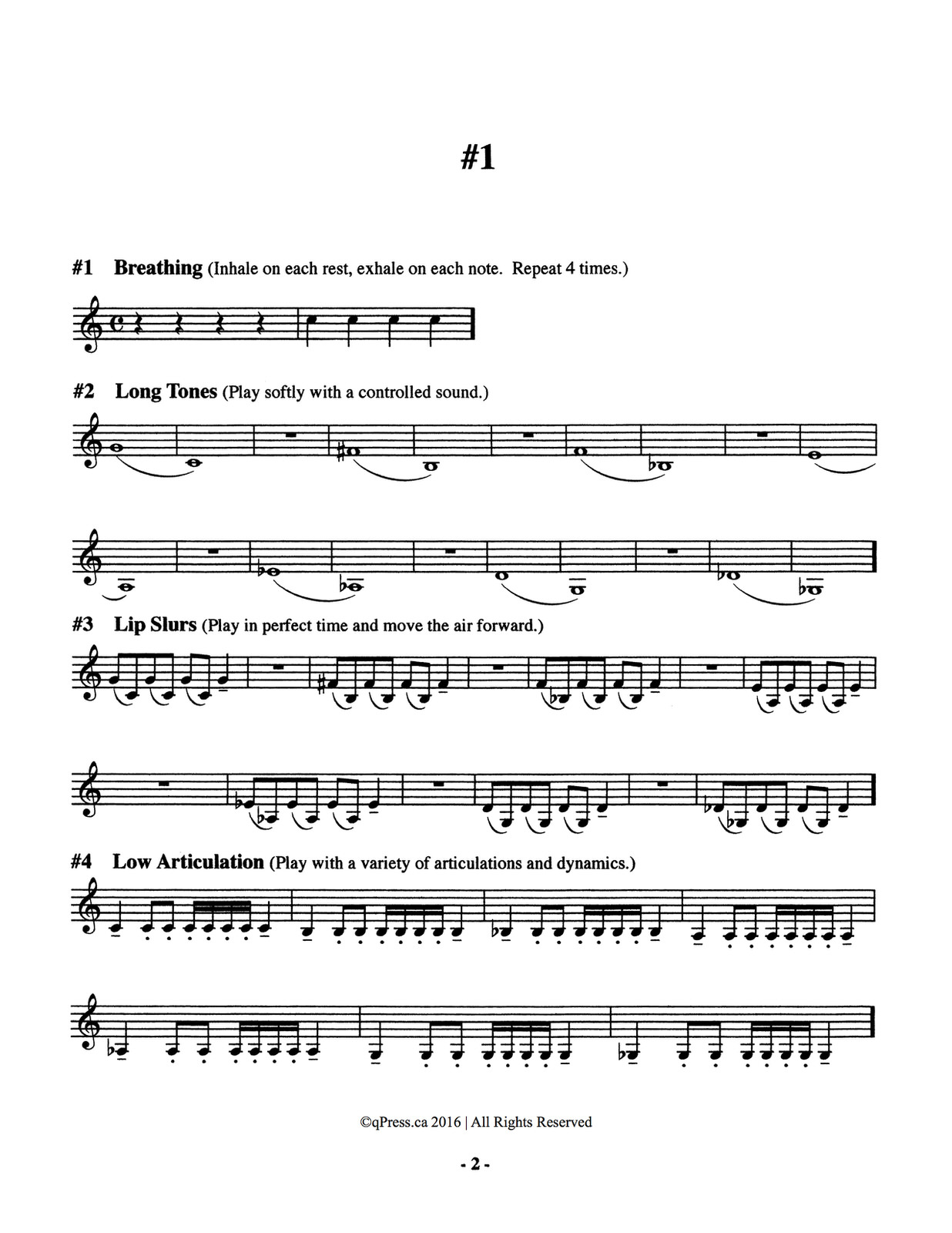
Also, add words for added expressiveness, and sing these words through the horn. Then transfer this singing through the horn.
When encountering problems, technically or musically, sing them and play them on the mouthpiece. Remember you are performing these pieces, and not practicing them. Play everything from excerpts to to pop tunes on it to do things musically. After working on the mouthpiece, do the same on the horn. Don’t try to place notes, but let them go where they want. Your ear will tell you, and do all the work for you if you allow it to. D, E, and E flat – let them float up to where they belong. D and B are good examples of good low range sound. Say “tay” on the lower register to get away from the tubby sound. The ear will do all the work if you let it. Approach on the lines of good sound and intonation will come there too. When a note sounds beautiful, it is in tune(and vice versa). Don’t think mechanics at all on the high range, just play and listen. Play arpeggios to get all ranges to sound good by being in tune and listening to the sound. This habit must be worked out and will eventually go away, however there is only one way to get rid of this bad habit, and that is to apply concepts every day in your playing. High register is no more physical than low, it should be as easy and sound just as good. There is nothing wrong with your chops, your mind is messing them up. Only practice in 45 minute sessions, that is what Bud does. Don’t favor slurs, and in fact, DON”T FAVOR ANY NOTES. Never have any tension in the body when playing, just learn to always relax. Be consistent, and NEVER PRACTICE BUT ALWAYS PERFORM. If you let up on all the notes, endurance is lost, and the overall sound is sickening. Remember-shaky high range can be due to letting up before hitting the note–rather take the lump and blow, that is the only way to be great. Play tunes in high range, also pick off high notes for practice. Know the importance of TONE, even in technical passages. Melodic playing is very, very important. Sound is criterion for how you do this or that. There are appropriate times for beauty and crudeness – use both. Solfege–Sight sing–buzz excerpts and studies. Overlap single tonguing speed with double and triple speeds. Practice long tones in all registers and volumes. And then you go through a few articulations, and gradually extend the range until your top, bottom, and middle registers, articulations, and lungs, are all there. You try to cover some of the fundamentals, first of all to get a nice freely-produced musical quality sound. You know, a warmup is just a practice session gradually approached – that’s really all it is. I do believe in warming up, and as I grow older I find that it takes a little longer to get all the brain cells and all the red corpuscles going. Here´s the notes from Tim Kent´s lesson diary : He was a legend, in the finest sense of that much-abused word. 
He was a hero to any musician who ever struggled to master what he once called “the most strenuous of instruments.” For more than a half-century, Adolph "Bud" Herseth’s distinctive sound and playing style were the bulwark of a brass section whose fabled power and brilliance have long been the sonic hallmark of the Chicago Symphony Orchestra. He was an inspiration to generations of brass players. Tim later became a member of the Chicago Symphony Orchestra, filling the 4th Trumpet position from 1979-1996īud Herseth was by general consent the most respected and influential orchestral trumpeter of the last half-century, and very probably the greatest.

Tim used to sit in his car after every session and remember what Mr.


These notes were meant for Tim, and was not inteded as general practise tips. He kept a lesson diary for each of the sessions he had with Herseth back in the 1970´s.








 0 kommentar(er)
0 kommentar(er)
